The Nabateans Info were an ancient civilization that flourished in the Arabian Peninsula between the 4th century BCE and the 1st century CE. Their remarkable architectural, trade, and water management achievements have captivated historians and archaeologists for centuries. In this article, we delve into the rich history of the Nabataeans, exploring their cities, culture, religion, and enduring legacy. Join us on this fascinating journey of discovery!
The Nabataeans emerged as a prominent civilization during the 4th century BCE, establishing their capital at Petra, a magnificent city carved into the rose-red sandstone cliffs of modern-day Jordan. Their strategic location along major trade routes brought them immense wealth and allowed them to flourish as skilled merchants.
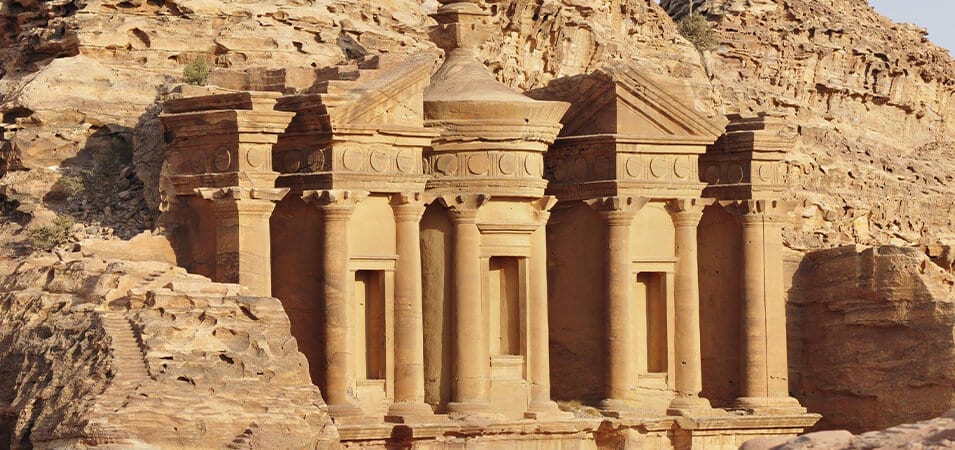
Don’t Miss checking out our Jordan Travel Packages.
Archaeological Discoveries
The archaeological exploration of Nabataean sites has unearthed invaluable insights into their civilization, shedding light on their way of life, architectural marvels, and cultural practices.
Excavations and findings at major Nabataean sites
Petra
The ancient Petra, renowned for its iconic rock-cut architecture, has been the focal point of extensive archaeological excavations. These excavations have revealed stunning facades, tombs, and intricate water management systems. The Treasury, the Monastery, and the Royal Tombs are among the most remarkable structures discovered at this UNESCO World Heritage Site.
Hegra (Mada’in Salih)
Hegra, located in present-day Saudi Arabia, served as the second capital of the Nabataean kingdom. Archaeological excavations at Hegra have brought to light a vast cemetery with elaborately carved tombs, inscriptions, and rock-cut facades. The site offers valuable insights into the Nabataean funerary practices and the integration of local and foreign influences.
Notable archaeological discoveries related to the Nabataeans
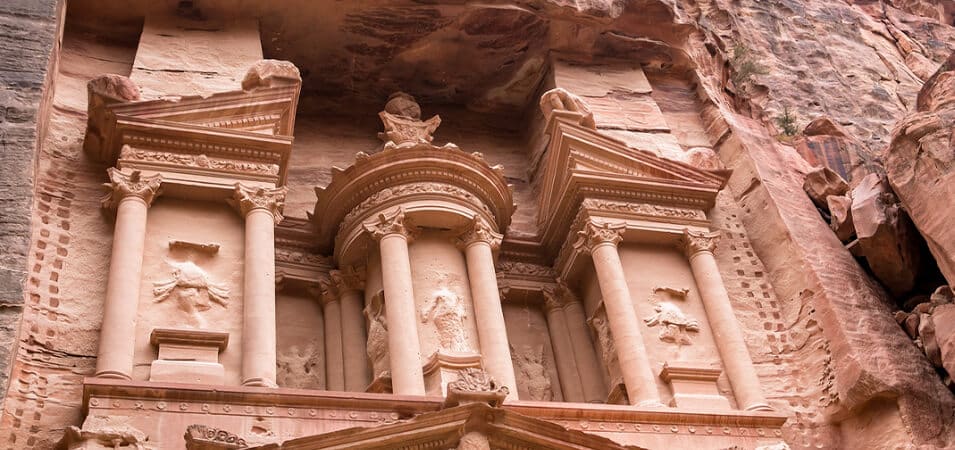
The Dead Sea Scrolls
The discovery of the Dead Sea Scrolls in the mid-20th century provided a remarkable glimpse into the intellectual and religious life of the Nabataeans and other ancient communities in the region. These scrolls in the caves near the Dead Sea contain diverse texts, including sacred writings and historical documents.
Al-Khazneh Inscription
The Al-Khazneh Inscription, found within the Treasury in Petra, is a significant Nabataean discovery. This inscription, written in the Nabataean script, provides valuable information about the Nabataeans’ culture, customs, and history. It is a testament to their sophisticated writing system and desires to immortalize their achievements.
The Nabataean Caravan Trade and Economic Prosperity
The Nabataean Trade Network: Connecting the Ancient World
The Nabataeans were renowned for their extensive trade networks that spanned vast distances, connecting the ancient world from the Arabian Peninsula to Egypt, Syria, and beyond. Their strategic location along important trade routes, such as the Incense Route, enabled them to thrive as prosperous merchants.
The Nabataeans established crucial trade links between the Arabian Peninsula and the Mediterranean, facilitating the exchange of valuable commodities like frankincense, myrrh, spices, and precious stones. They developed sophisticated trade routes, complete with resting stations, wells, and protection measures, ensuring the safe passage of caravans laden with goods.
Incense Route: Key to Economic Success
The Incense Route played a pivotal role in the economic prosperity of the Nabataeans. This ancient trade route stretched from southern Arabia through the desert of the Arabian Peninsula, reaching its peak in Petra and Gaza. The Nabataeans controlled the vital sections of the Incense Route, profiting from the lucrative trade in frankincense and myrrh.
The transportation and trade of these aromatic resins brought substantial wealth to the Nabataeans. They facilitated cultural exchanges by encountering traders, pilgrims, and merchants from diverse civilizations along the route.
The Nabataean Water System: Engineering Ingenuity
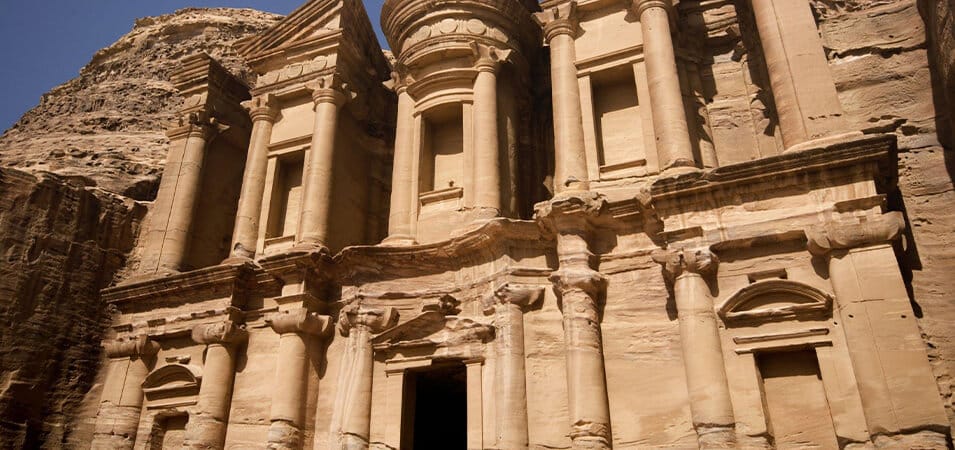
Aqueducts: Masterpieces of Water Management
In the arid desert environment, water management was crucial for the survival of the Nabataean civilization. They ingeniously engineered a vast network of aqueducts to capture, store, and distribute water to their cities and agricultural lands.
The Nabataean aqueducts, constructed using a combination of stone and clay pipes, diverted water from natural springs and seasonal streams. The engineering marvels of these aqueducts allowed the Nabataeans to channel water over long distances, providing a sustainable water supply for their cities and supporting their agricultural activities.
Cisterns: Securing Survival in the Desert
To further ensure water security in the desert, the Nabataeans employed an innovative system of cisterns. These underground reservoirs were meticulously carved out of rock, capable of storing vast quantities of water.
The cisterns served as necessary water storage facilities during drought or when natural water sources were scarce. The Nabataeans developed advanced techniques for collecting and filtering rainwater, allowing them to maximize the availability of this precious resource and sustain their communities in the arid desert environment.
Nabataean Culture and Society
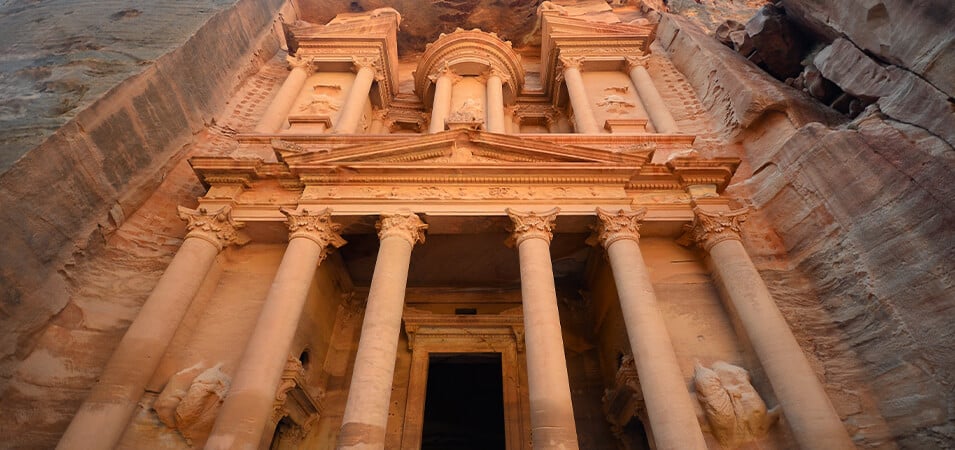
Nabataean Language: A Mysterious Script
Although the Nabataean language needs to be well-documented, it is believed to be a dialect of Aramaic. The Nabataeans left behind inscriptions and graffiti that provided valuable insights into their linguistic heritage. These inscriptions, carved on rock surfaces or written on pottery, are a testament to the significance of the written word in Nabataean culture.
Deciphering the Nabataean script remains challenging, adding an air of mystery to their language and culture. Scholars continue to study and analyze these inscriptions, striving to unlock the secrets.
Social Structure: From Nomads to Urban Society
The Nabataeans began as nomadic tribes in the Arabian Peninsula before transforming into a sophisticated urban society. As they settled in permanent cities like Petra, their social structure evolved, encompassing a range of occupations and social classes.
The Nabataeans had a hierarchical social system, with rulers, merchants, artisans, and farmers comprising the societal fabric. Their cities served as bustling commerce and cultural exchange centers, attracting people from diverse backgrounds and fostering a cosmopolitan atmosphere.
Nabataean Religion: Worshipping Diverse Deities
The religious beliefs of the Nabataeans were polytheistic, with a pantheon of deities worshipped throughout their kingdom. The Nabataeans embraced a syncretic approach, blending local Arabian gods with influences from other ancient civilizations, including Greek and Egyptian.
Key Nabataean deities included Dushara, the chief god of fertility and protection, and Al-Uzza, a powerful goddess associated with prosperity and warfare. The Nabataeans constructed numerous temples and sanctuaries dedicated to their gods, often featuring intricate carvings and reliefs.
The Nabataeans’ Enduring Legacy
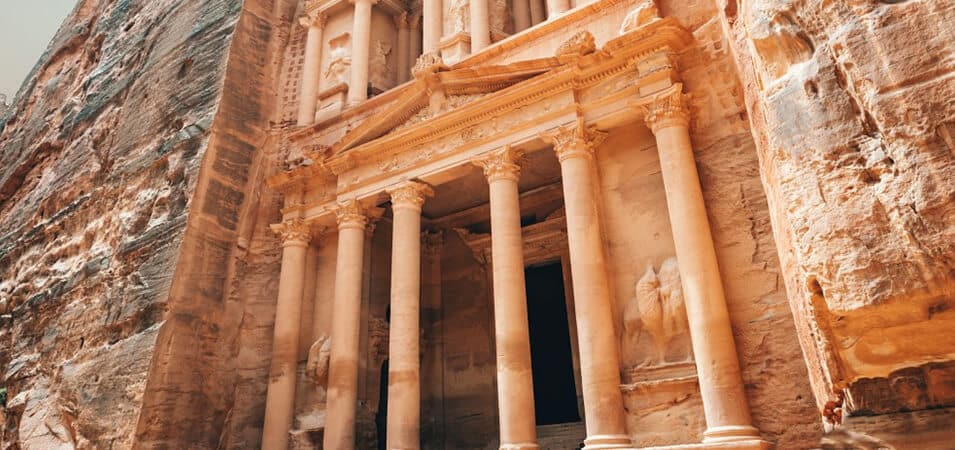
Influence on Later Civilizations
The architectural and engineering achievements of the Nabataeans left a lasting impact on subsequent civilizations. Their innovative rock-cut architecture, advanced water management systems, and trade networks served as inspiration for future societies in the region.
The Nabataean influence can be seen in the architecture of the Roman Empire, which absorbed and incorporated many elements of Nabataean design. The legacy of the Nabataeans lives on through the architectural marvels of Petra and other Nabataean sites, which continue to inspire awe and admiration.
Essential figures in Nabataean history
Throughout history, the Nabataean civilization produced numerous individuals who significantly shaped the ancient world’s culture, politics, and trade. Their contributions left a lasting impact, from rulers and leaders to influential figures. Let’s explore some of the important figures in Nabataean history.
Aretas IV (9 BC – 40 AD):
Aretas IV, also known as Aretas Philopatris, was one of the most notable Nabataean kings. He ruled during a crucial period when the Roman Empire expanded its influence. Aretas IV skillfully navigated diplomatic relations with the Romans, preserving Nabataean independence and ensuring stability within his kingdom. His reign saw advancements in architecture, irrigation systems, and trade routes.
Malichus II (40 – 70 AD):
Malichus II succeeded Aretas IV as the Nabataean king. During his rule, the Nabataeans faced increasing pressure from the Roman Empire. Malichus II played a crucial role in maintaining a delicate balance of power, negotiating with the Romans to protect the interests of his people. He implemented reforms to strengthen the economy and cultural identity of the Nabataeans.
Shaqilath II (105 – 130 AD):
Shaqilath II, a queen regnant, broke gender barriers and ruled over the Nabataean kingdom. Her reign coincided with a period of relative stability and prosperity. Shaqilath II continued the legacy of her predecessors, focusing on trade expansion and urban development. Under her rule, Petra, the capital city, flourished as a vibrant center of commerce and culture.
Aretas III (87 – 62 BC)
Aretas III was a prominent Nabataean king who reigned during significant territorial expansion. He expanded the Nabataean kingdom’s borders, annexing several regions and establishing control over key trade routes. Aretas III’s strategic vision and military prowess laid the foundation for the following prosperity.
Rabbel II (70 – 106 AD)
Rabbel II, a successor to Malichus II, faced numerous challenges during his rule, including the Roman annexation of Nabataea. Despite these difficulties, he managed to maintain autonomy for the Nabataeans. Rabbel II’s diplomatic skills and ability to navigate complex political landscapes earned him respect and admiration among his people.
Rediscovery and Preservation of Nabataean Heritage
After centuries of obscurity, the Nabataean civilization was rediscovered by explorers and archaeologists in the 19th century. Since then, ongoing excavations and preservation efforts have shed light on this ancient culture, allowing us to unravel the mysteries of their society, trade networks, and religious practices.
Organizations and governments have taken significant steps to protect and preserve Nabataean heritage sites, recognizing their cultural and historical value. This ensures that future generations can appreciate the architectural marvels and cultural legacy left behind by the Nabataeans.
Conclusion
The Nabataean cities stand as remarkable architectural marvels, showcasing the ingenuity and creativity of this ancient civilization. From the enigmatic city of Petra to the rock-cut tombs of Mada’in Saleh, the Nabataeans left a lasting impact on the ancient world. The Nabataeans have secured their place in history as a remarkable civilization worthy of exploration and admiration through their extensive trade networks, advanced water management systems, and rich cultural heritage.
Don’t Miss to Check out our Related Article :
